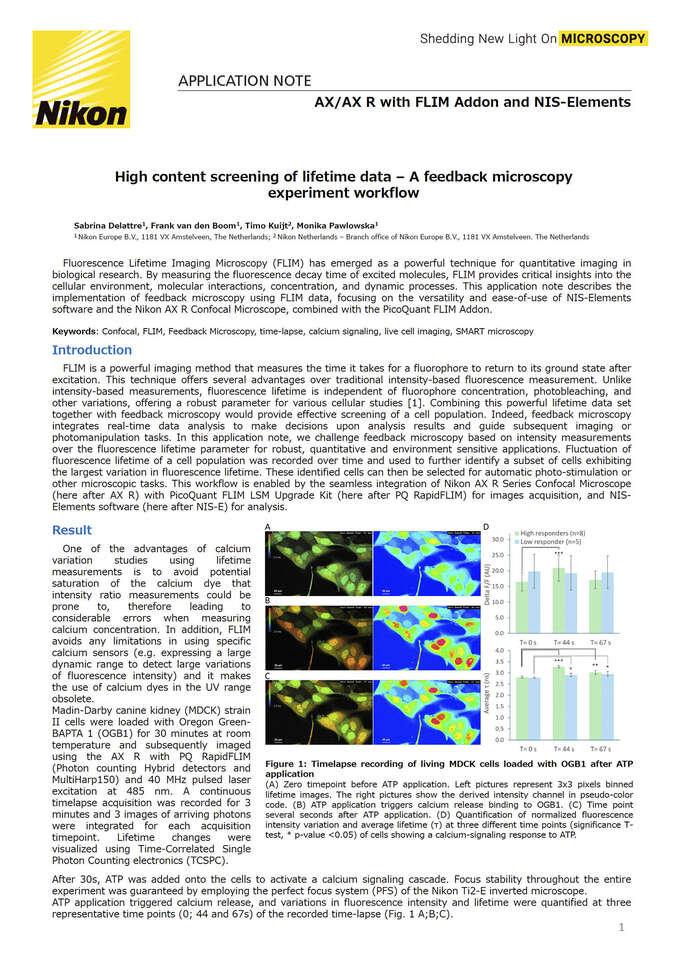- en Change Region
- Global Site
Application Notes

High content screening of lifetime data – A feedback microscopy experiment workflow
February 2025
FLIM is a powerful imaging method that measures the time it takes for a fluorophore to return to its ground state after excitation. This technique offers several advantages over traditional intensity-based fluorescence measurement. Unlike intensity-based measurements, fluorescence lifetime is independent of fluorophore concentration, photobleaching, and other variations, offering a robust parameter for various cellular studies. Combining this powerful lifetime dataset together with feedback microscopy would provide effective screening of a cell population. Indeed, feedback microscopy integrates real-time data analysis to make decisions upon analysis results and guide subsequent imaging or photomanipulation tasks. In this application note, we challenge feedback microscopy based on intensity measurements over the fluorescence lifetime parameter for robust, quantitative and environment sensitive applications. Fluctuation of fluorescence lifetime of a cell population was recorded over time and used to further identify a subset of cells exhibiting the largest variation in fluorescence lifetime. These identified cells can then be selected for automatic photo-stimulation or other microscopic tasks. This workflow is enabled by the seamless integration of Nikon AX R Series Confocal Microscope (here after AX R) with PicoQuant FLIM addon (here after PQ RapidFLIM) for images acquisition, and NIS-Elements software (here after NIS-E) for analysis.
